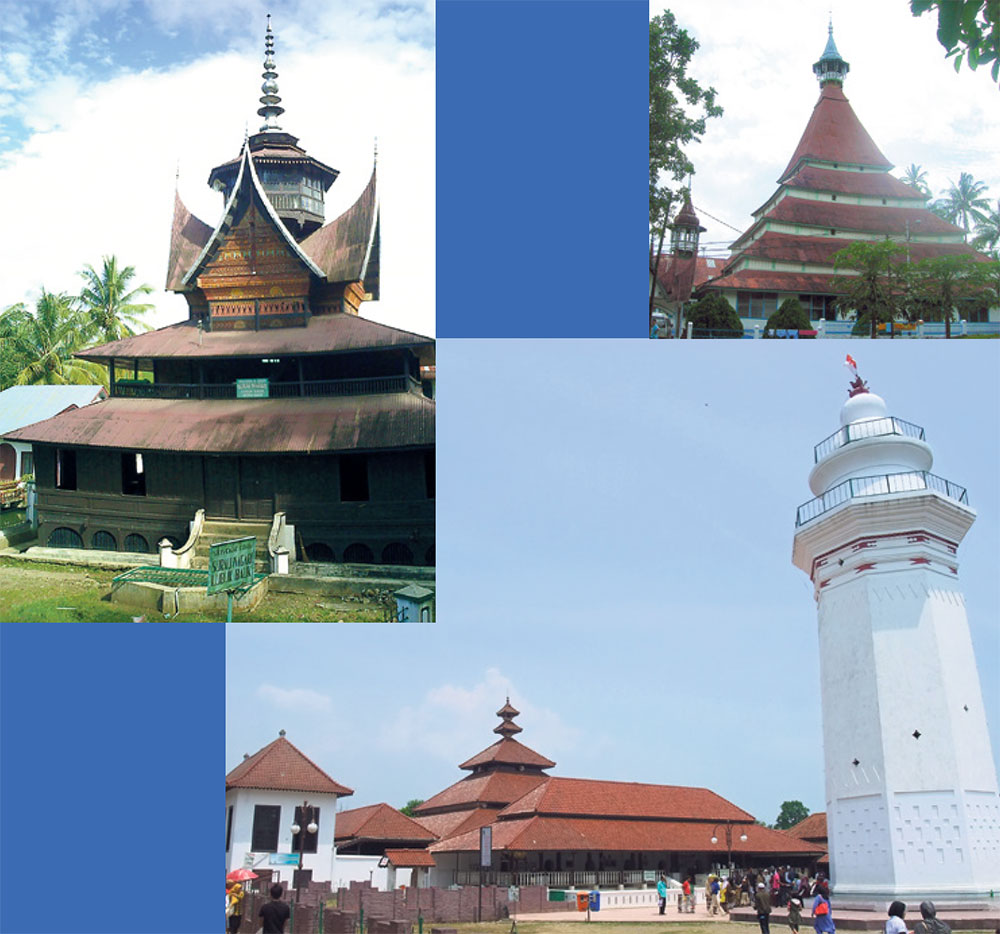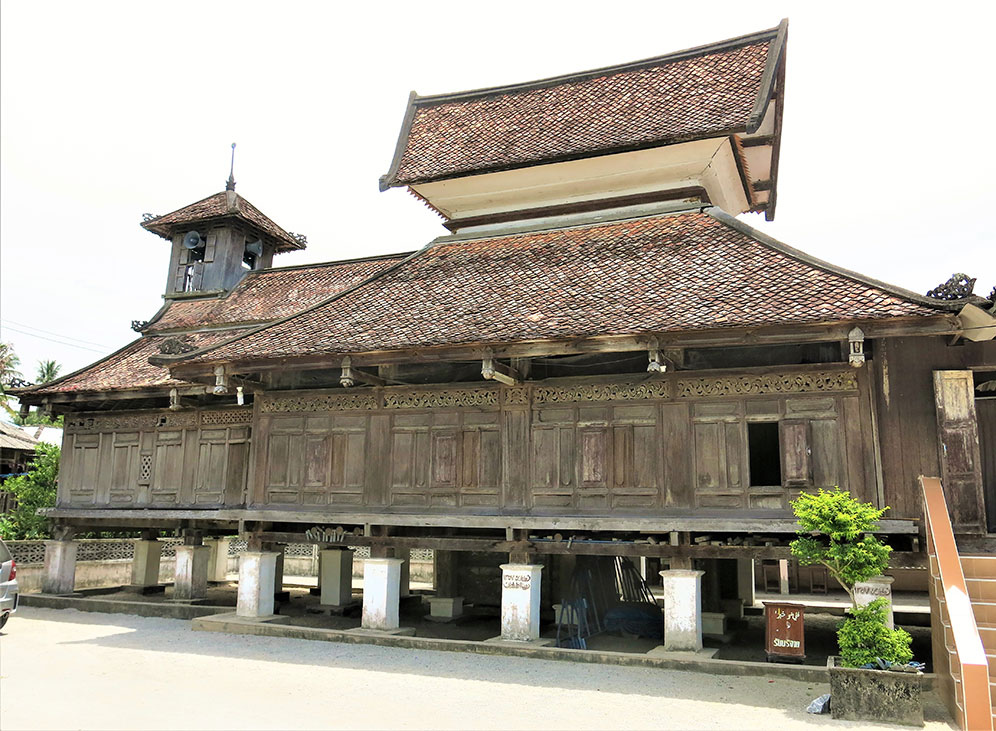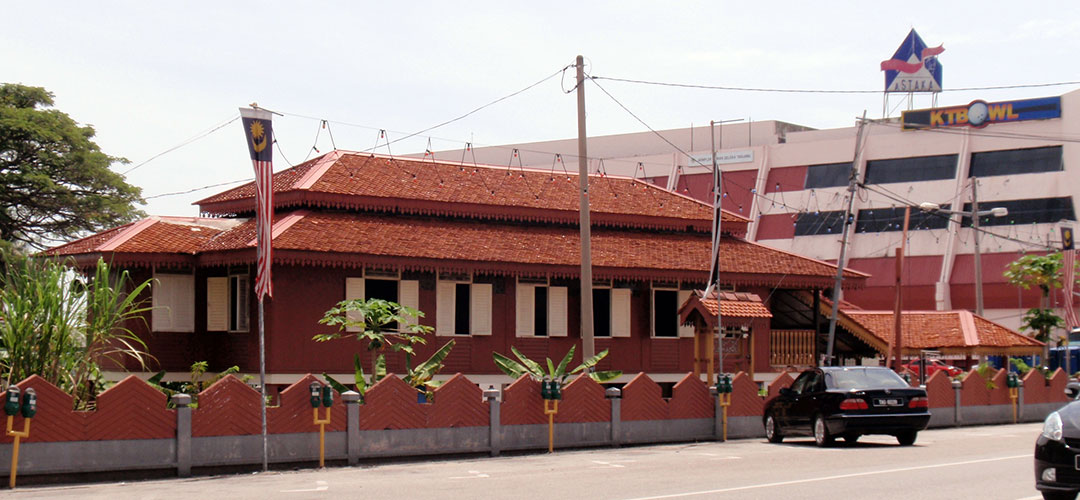Introduction to Southeast Asian Forms of Mosque Architecture
Contrary to the narrative in most regional surveys, 1 the Southeast Asian mosque form was not confined to a single type featuring a multi-tiered pyramidal hip roof only. Several other types were also to be found, though existing survey texts have only partly addressed this typological diversity 2 The great diversity in mosque building types in Southeast Asia before the introduction of the dome form since the late 19th century bears witness to translocal circulations and recombination. There are few comprehensive or in-depth studies of historical examples and their former contexts. Besides a number of examples on Java, 3 historical mosques from other regions of Southeast Asia have not been well studied. 4 Many have also been demolished and replaced by new buildings featuring the dome. 5
This article reviews three main issues: first, historiographical categories; second, the cultural and geographical contexts in which mosque forms were created; and third, the question of reinterpretation and revivals, localised Muslim cosmopolitanism, and the limits of translation.
Southeast Asian mosques in ‘Islamic architecture’, and art and archaeology surveys
The built heritage of mosques developed in maritime Southeast Asia is invariably excluded from surveys of Islamic art and architecture, a fate that is shared with Southern Arabia, Southern India, and Southern China. This exclusion needs to be understood in relation to the historiographical and geographical contexts of the study of mosques and Islamic art and architecture, which focused on the archaeology and art historical study of brick and masonry structures left behind by a number of inter-related dynasties and polities. For instance, attention for the 12th to 18th centuries is typically given to Persianate West and South Asia, Turkic and Persianate Central Asia, and the Arab-speaking lands of West Asia and the Mediterranean. 6 In the Indian subcontinent, the focus was on what Richard Eaton calls the Indo-Persian axis, which excludes the maritime Muslim regions of Kerala and Tamil Nadu. Maritime regions of the Indian Ocean and beyond – where maritime Southeast Asia is to be found – thus lay beyond the scope of Islamic architecture surveys.
The ‘vernacular architecture’ category used to define Southeast Asian mosques may have further distanced it, given the primacy of the disciplines of archaeology and art history in the study of Islamic architecture. Vernacular architecture is typically defined as structures in wood as opposed to classical or canonical stone or brick architecture. This framing is problematic – Southeast Asian mosques and associated structures use a variety of materials beyond wood. Conversely, it is also necessary to expand the horizon of surveys of art and archaeology in Southeast Asian architecture beyond their usual focus on Hindu and Buddhist structures. Mosques typically do not even appear in such surveys or are consigned to a very small section. 7
Variety of forms
Roof forms and the spatial and structural corollary features point to the connection of the Southeast Asian mosque to earlier building types. Roof forms thus usefully serve as synecdoche when discussing typology.
The first type is the tajug or pyramidal-hip roof type. This is the dominant form and can be found in examples from the 15th to 18th centuries in Champa, South Borneo (Banjarmasin), Palembang (Masjid Agung), Melaka (Tengkera, Kampung Keling, and Kampung Hulu), and Banten (Masjid Agung, Kasunyatan and others). The examples from Banten display the type’s miniature upper tiers. In Java and Sumatra alone, great diversity may be seen in the form, including the number of roof tiers, the construction of walls and platforms, and the configuration of columns and beams. Minangkabau (West Sumatra) mosques possess two variant forms depending on the laras (“clan fraternity”). In both the mosque of Jepara (north coast Java, expunged) and Limo Kaum (West Sumatra), the upper levels of the massive five-tiered roofs are used as true floors, unlike other mosques where multi-tiered roofs are superimposed primarily for ventilation, esthetical, or symbolic purposes. Despite tremendous variations in this roof form, one feature found in common throughout the region is the use of a finial (mustaka or memolo) to decorate the summit of mosques [Fig. 1].

Fig. 1: Varieties of the pyramidal-hip roof form or tajug: (a) top: Royal Mosque of Banten in western Java, Indonesia (Photo by the author, 2009); (b) bottom left: Limo Kaum Mosque in highland west Sumatra, Indonesia (Photo by the author, 2015) (c) bottom right: Lubuk Bauk small prayer hall (surau) in highland west Sumatra, Indonesia (Photo by the author, 2012)
A second type using the gable or hip form is found in Kelantan, Teluk Manuk, Kota Bahru [Fig. 2], and also in Champa. It is also present in 9th-century temple reliefs such as at Prambanan in Central Java. A third type is the hipped roof, found, for example, in 15th-century Cirebon and Buton and early 20th-century Singapore (Khadijah and Hj Muhammad Saleh mosques). It is also found among other sites along the Straits of Melaka and the Malay Peninsula, such as at Kuala Terengganu (Surau Tok Kerinchi) [Fig. 3]. Finally, the simplest gable roof type, with two or three roof layers, is seen in small prayer halls or surau, such as at Surau Aur (Patani, southern Thailand) and in examples at Tengkera and Banda Hilir (Melaka, Peninsula Malaysia).

Fig. 2: Telok Manok Mosque in Patani, southern Thailand (Photo by the author, 2015)
Translation and reworking
The names of some of the features on these various mosque types point to derivation from building types used as Hindu or Buddhist wooden shrines, as formerly found in Kedah, Muara Jambi, Central Java, and East Java. These features are distinct from temples found in India. Conversely, indigenous names and the forms of small Muslim prayer halls, today adopting the Arabic term musolla but originally called surau and langgar, point to origins in indigenous cult buildings and men’s houses.

Fig. 3: Tok Kerinchi small prayer hall (surau) in Kuala Terengganu, Peninsular Malaysia (Photo by the author, 2012)
A key illustration of translation and reworking is seen in Java, where the Tralaya tombstones bearing Arabic Islamic inscriptions used the Saka calendar rather than the Arabic-Islamic one, and in the Trengganu Stone, which proclaims Muslim and local laws inscribed in the Jawi script (Arabic modified for Malay), but using the term Dewata Mulia Raya for God, rather than Allah as would be expected. 8 These examples defy the idea of a simple rejection of pre-Islamic cultures or of an unconscious ‘influence’ of pre-Islamic cultures. Instead, we observe the conscious and literate translation and accommodation of culture across conversion. The transculturation process from pre-Islamic Malay and Javanese literate cultures can thus be seen on these and other gravestones. They serve as indicators of parallel processes of adapting older building forms – some of which had previously served as cult buildings for indigenous, Hindu, and Buddhist creeds – for new Islamic needs. 9
Imran bin Tajudeen is Senior Lecturer at the Department of Malay Studies and the Department of Communications and New Media, National University of Singapore, where he teaches topics on identity and representation through the arts, urban history, and built cultural heritage in maritime Southeast Asia. E-mail: imran.tjdn@gmail.com